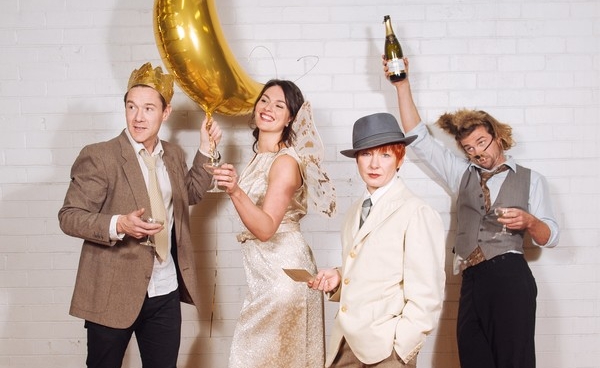The pair became mates when Johnston started dating Thornton’s cousin and realised that they had a happy meeting of the minds when it came to design. They also agreed that there was bugger all back to help an independent label get off the ground and that the existing markets were frustrating. “When I first finished study [as a jewelry designer] I was doing the odd weekend market and I felt that people weren’t after paying more money for something that was hand-made,” Johnston recalls. “That wasn’t why they were going to the markets, so you got attitude about price-point. There wasn’t a real understanding of handmade back then.”
As with some of the best ideas, The Finders Keepers markets were conceived over a bevvie. Back then, their goals were modest. “I was thinking the dream event would be in a little hall with 25-30 stalls, a little guitar player in the corner and a few wines,” Johnston laughs. “At that point of time, we weren’t even after a career in it. We did know that we wanted to attract the right people though. We knew that a lot of people in our circle appreciated handmade and we just needed more likeminded people in one space – that’s how the markets and the idea for our community came about.”
Compare the idea at its inception to the behemoth undertaking The Finders Keepers markets have become: the next Melbourne market features 220 design and art stalls, DJs, bands and the recent additions of a vintage emporium and a local produce and foodie heaven in the Farmer’s Lane. “It’s become its own beast in a way – I think it was a matter of timing though,” Johnston laughs modestly. “We’ve been absolutely overwhelmed with how it’s grown. Never in our lives did we think it’d be like this. Never.”
Johnston’s had a lot of moments where she’s blinked in wonder at how it’s all unfolded. She’s got a favourite “holy shit” moment though. “Yeah, it was our last Melbourne market,” she reflects (of course it was). “It was our biggest yet – we had 275 stalls, we’d just introduced the Farmer’s Lane to Melbourne and we had record crowds. We were just blown-away by how many people turned up to support it.”
They’ve given themselves a big brief too – their mission is to educate the community to invest in local and independent design and to inspire others. The ladies have achieved this goal largely by curating the market and giving preference to designers who’re starting off or who haven’t done the markets before. They’ve got a debut program too – 20 stalls are available to design newbies at a discounted price, making it accessible to designers at whatever point they’re at in their careers.
Given the length of time for which The Finders Keepers markets have been a-go, Johnston’s been delighted to see some of those newbies flourish. “A lot of designers we still know,” she explains. “But we’ve seen designers come on as debuts and then go from strength to strength and then have huge booths at trade fairs – they’re now making amazing careers out of it.”
It’s the element of curation that really sets The Finders Keepers markets apart: Johnston and Thornton work hard to even out categories and make sure that they’re not saturating the markets with anything. For instance, although jewelry is really popular, they bust their chops to make sure that it’s not overcrowded with the same sort of thing and copy-cat items are barred. They’re also after innovation, a cohesive range and items that are well photographed and branded. Then there are trends to contend with and the no small matter of personal preference. “We have to set aside our own tastes” she admits. Does that mean Johnston’s ever let a stall through to the keeper that she’s hated? Her response is diplomatic. “Not hated,” she chortles (which you can probably take as a yes). “There are definitely things in there that I’m more fond of though. There’s 200 stalls, so that’s gotta to happen.”
Johnston’s got some advice for budding designers too. “Don’t rush the product,” she says without hesitation. “Make sure you’ve got a really strong brand identity, because that’s quite big now – it’ll catch the customer’s and retailer’s eye – and don’t copy.”
BY MEG CRAWFORD







